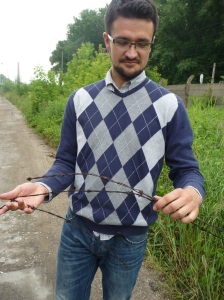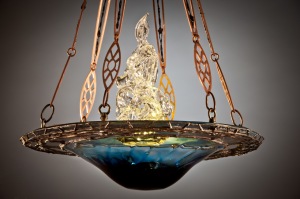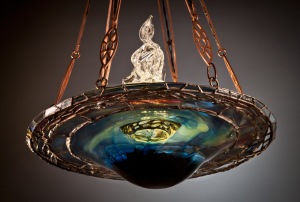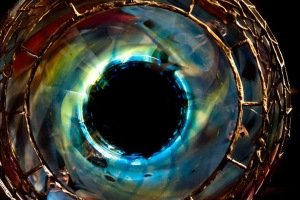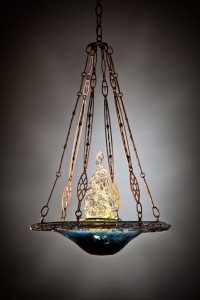Mining our trip to Germany and Poland continues to yield its riches and mysteries, and Walter and I find it important to explore and record our experiences. One story especially stands out.
My Polish born parents survived the Holocaust and emigrated to the United States in 1948. They never wanted to go back to the country where their families were decimated and the life they knew was destroyed. So it was long after they died that Walter and I went to trace my roots in Poland. We and our cousins hired guides and made some informal connections through social media. What began as a trip to say Kaddish became also a witnessing of budding sparks of Jewish life. The trajectory of our journey led us to a cache of young Poles searching their Jewish roots and non-Jewish Poles supporting a rebirth of Jewish culture. The void we felt in Poland was mirrored in the people we encountered who have chosen to make their life’s work to try to understand their country’s past and the culture lost to them.
We were walking around the concentration/labor camp, Hasaq, where my parents spent 1941 to 1945 in forced labor, where they were threatened with deportation and death, and where they lost most of their large family and many friends. Hasaq is a short distance from what had been the Czestochowa Ghetto. We were with a Polish father and son, Kristof and Vitek Straus, who had volunteered to meet and guide us around the sites of Jewish Czestochowa. While imagining the horrors of my parents’ and our people’s daily struggles to survive, we saw Vitek approach the pylons of the perimeter wall of the camp and reach up to break off strands of the now more than seven decades old brittle barbed wire that held 5000 Jewish people at any one time enslaved until “selected” for death in Treblinka and other Death Camps.
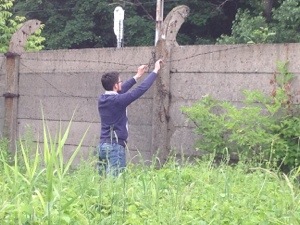
Vitek handed me five three foot strands of barbed wire. Shocked, I said that I do not take anything away from memorial places. He said that while the plaque to memorialize the Hasaq prisoners would remain on part of the outer wall, the camp would be demolished to make way for new construction. Knowing that Vitek’s impulse to give me these wires came from a caring place, I accepted. But now there was the dilemma of what to do with this paradoxical gift given to me during the summer of 2013.
Home, Walter and I turned to David Harris, Director of RIMON, the Minnesota Jewish Arts Council. We brainstormed many ideas, but nothing clicked until we went to a RIMON fundraiser the following April. P’chatchka, a Jewish adaptation of a Japanese presentation style, gives a group of Jewish artists 18 slides and 18 seconds per slide to describe their Jewish art to the audience. The answer to the question of what to do with the barbed wire revealed itself when we saw Claude Riedel’s presentation on Nerot Tamid, Eternal Lights.
Working with blown glass and metal, Claude creates beautiful Nerot Tamid that now illuminate Jewish synagogues around the world. Hearing about the wire and the idea of incorporating it into an Eternal Light, Claude immediately resonated with the idea and invited us and David Harris to his studio. The synergy between us was palpable!
As we shared our experiences, thoughts and creative ideas, the Ner Tamid began to take shape in our minds. Then Claude turned them into reality.
Yes, a Ner Tamid! But why weld barbed wire into the chain of a Ner Tamid? For Claude, as for each of us, the wire gives voice for the call to always “Remember – Zachor.” The barbed wire meant to hold Jewish people captive until sending them to their death is here transformed. The Ner Tamid is eternal as is our memory of those who suffered and perished in the Holocaust, the Shoah. The beauty of this lamp reflects the Jewish life that was lost. In its light, our memories will never be extinguished. In it we see the strength and resilience of our people, the “tikva”, the hope and light out of darkness. The barbed wire of Hasaq is part, but not the essence, of the chain of our continuity, just as the Holocaust is part of our Jewish experience, but not its essence.
Now the Ner Tamid is ready to go into a place of honor. The next part of its story is about where the Ner Tamid will shine in all its beauty and significance for generations to come.
